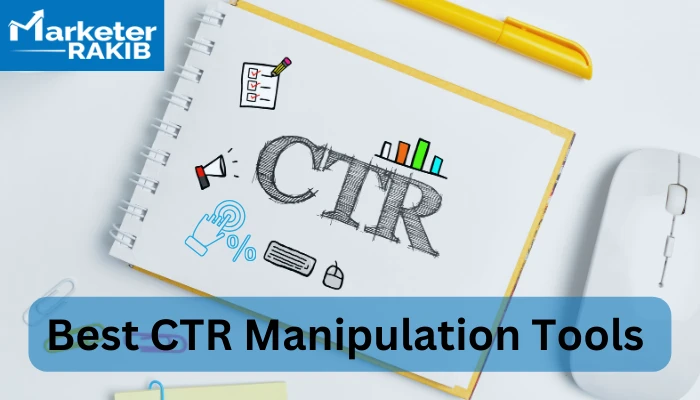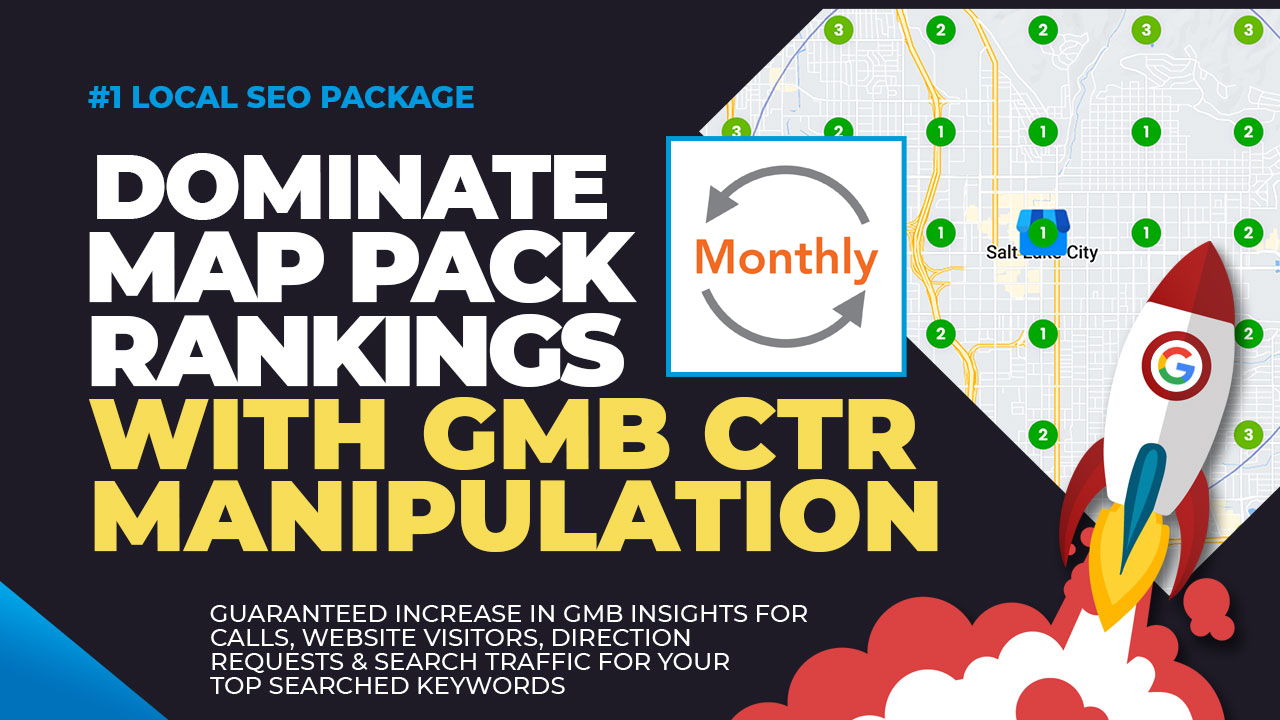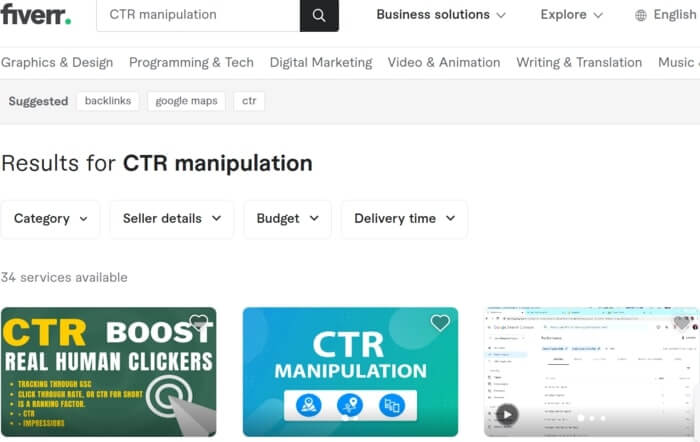Unlock Greater Positions with Reliable CTR Manipulation Approaches
Wiki Article
Maximizing Organic Click-Through Fees With CTR Adjustment
The optimization of natural click-through prices (CTR) is a nuanced endeavor that hinges on comprehending both user psychology and reliable content discussion. By leveraging strategic control techniques, such as powerfully crafted headings and visually interesting components, marketing professionals can dramatically enhance customer interaction. However, the landscape is raging with false impressions and oversimplifications concerning what truly drives CTR. As we discover the ins and outs of these methods, it becomes important to determine the underlying concepts that can cause continual success in recording audience interest. What genuinely distinguishes the effective from the ineffective in this critical aspect of electronic advertising?Recognizing Click-Through Fees
Recognizing click-through prices (CTR) is crucial for evaluating the effectiveness of internet marketing strategies. CTR gauges the portion of individuals who click a certain web link or ad contrasted to the overall number of individuals who watch it. A greater CTR shows that the web content is involving and relevant to the target audience, while a lower CTR might indicate a demand for optimization.To determine CTR, divide the variety of clicks by the number of impacts and multiply by 100. For example, if an advertisement receives 300 clicks out of 10,000 impacts, the CTR would be 3%. This metric is critical for evaluating different components of digital advertising and marketing, including seo (SEARCH ENGINE OPTIMIZATION), email campaigns, and social media sites marketing.
Additionally, analyzing CTR helps marketers determine which techniques generate the best outcomes and which call for improvement. By concentrating on improving CTR, organizations can boost their content's exposure and efficiency, bring about raised traffic and potential conversions. Understanding the nuances of CTR is fundamental for any kind of marketer intending to enhance their on-line visibility and take full advantage of roi (ROI)

The Psychology of Individual Habits
User actions is considerably influenced by emotional variables that dictate how individuals interact with on-line material. Understanding these elements is important for maximizing click-through prices (CTR) in natural search results. Cognitive prejudices, such as the anchoring impact, play an essential duty fit individuals' perceptions. Their preliminary perceptions can greatly influence their succeeding judgments about relevance and reputation. when users run into info.Psychological feedbacks also substantially influence customer behavior. Content that reverberates psychologically can trigger a sense of necessity or inquisitiveness, motivating customers to click. In addition, social evidence-- such as user reviews or ratings-- can enhance count on and encourage interaction, as people typically seek to the habits of others to educate their own choices.
Furthermore, the principle of shortage can drive clicks - CTR Manipulation Service. Limited-time deals or special material develop a fear of missing out on out (FOMO), engaging customers to act swiftly. Understanding these psychological drivers makes it possible for online marketers to develop even more engaging content that resonates with their target market
Effective CTR Manipulation Strategies
Leveraging mental insights can dramatically enhance click-through prices (CTR) via targeted manipulation strategies. One of one of the most effective methods is making use of engaging headlines that stimulate inquisitiveness or urgency. Phrasing titles as concerns or integrating numbers can draw in even more interest, triggering users to click.An additional technique involves maximizing meta summaries to produce a feeling of significance and immediacy. By clearly outlining the benefits or options given in the material, you can involve potential viewers and convince them to click. In addition, making use of power words-- such as "special," "shown," or "free"-- can boost the allure of your material.
Visual components likewise play a critical function. Integrating attractive pictures or thumbnails can attract users in and boost CTR. A/B testing various visuals can help identify which images resonate ideal with your audience.
Finally, ensuring that your web content assures deliverable worth results in higher CTR. When individuals perceive that clicking will certainly offer them with purposeful understandings or services, they are most likely to involve. By employing these techniques attentively, marketing experts can efficiently adjust CTR to their advantage while maintaining honest criteria.
Common Misconceptions Concerning CTR
Several false impressions surround click-through rates (CTR) that can lead marketing experts to make misdirected choices. One prevalent myth is that a higher CTR constantly translates to much better efficiency. While a high CTR suggests that more individuals are clicking, it does not ensure sales or conversions. Inevitably, the performance of web traffic depends upon the top quality of the touchdown web page and the significance of the web content.Another usual idea is that CTR is an isolated metric. Actually, CTR should be reviewed combined with various other efficiency indications, such as bounce price and conversion rate, to gain a holistic view of campaign success.
Additionally, some marketing professionals presume that enhancing for CTR alone is enough. Concentrating exclusively on CTR can lead to clickbait techniques that might draw in clicks but fail to involve individuals meaningfully. CTR Manipulation Service. This method can damage brand name credibility and outcome in lower retention prices
Finally, there is an idea that CTR methods are universally efficient. The truth is that ideal CTR tactics can vary significantly across sectors and target audiences, demanding tailored techniques for different market sections. Recognizing these myths is critical for establishing reliable CTR methods that straighten with overarching advertising objectives.
Gauging CTR Success
Although high click-through rates (CTR) can suggest effective engagement with material, determining their real success requires an extensive evaluation of numerous factors. It is vital to recognize the context in which the CTR is achieved. For example, a high CTR on a misleading title may not convert to purposeful engagement or conversions, ultimately showing improperly on the brand name's reliability.Second, examining the resource of website traffic is vital. Organic website traffic from online search engine can symbolize a durable material method, while clicks from pointless resources might suggest a lack of targeting. Additionally, determining the subsequent individual behavior is vital; examining metrics such as bounce rate, time invested in web page, and conversion prices can give deeper understandings right into the high quality of the interaction started by the CTR.

Final Thought

The optimization of organic click-through prices (CTR) is a nuanced endeavor that pivots on comprehending both individual psychology and effective content discussion. CTR measures the portion of customers who click on a specific web link or advertisement contrasted to the total number of individuals that view it. A greater CTR suggests that the material is engaging and pertinent to the target audience, while a lower CTR might signify a demand for optimization.
Focusing solely on CTR can lead to clickbait methods that may draw in clicks but stop working to involve customers meaningfully. Additionally, determining the succeeding user behavior is crucial; analyzing metrics such as bounce rate, time spent on web page, and conversion prices can supply much deeper insights into the high quality of the interaction initiated by the CTR.
Report this wiki page